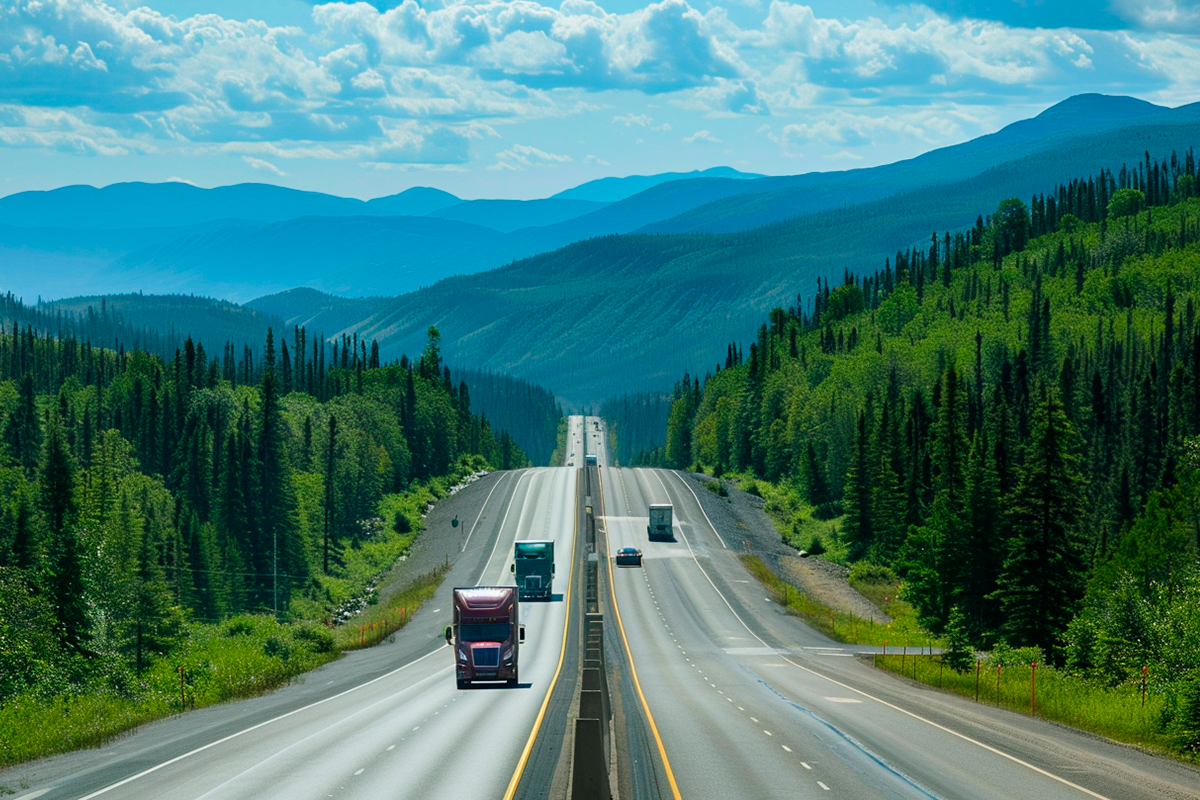In our rapidly evolving global economy, travel emissions remain a significant environmental concern, contributing substantially to the world's carbon dioxide (CO2) emissions. Recent statistics reveal that transport is the second-largest source of global CO2 emissions, with a considerable portion stemming from business operations. This alarming figure underscores the urgency in addressing transport emissions not only for environmental preservation but also for the sustainability of future business practices.
 Visual of a commercial plane overflying natural landscapes of New Zealand. AI generated picture.
Visual of a commercial plane overflying natural landscapes of New Zealand. AI generated picture.
Businesses of all industries and sizes have travel-related emissions and are uniquely positioned to spearhead the transition towards more sustainable practices. By compensating for your travel emissions, you can significantly reduce your business’ carbon footprint, setting a precedent for sustainability in the corporate world. This action is not just about adhering to regulatory requirements or achieving short-term environmental targets; it's about embedding sustainability into the core ethos of your operational model.
Measure your carbon footprint now
In the quest for more sustainable solutions and reduced carbon footprints, the focus is increasingly shifting towards nature-based solutions (NBS) and carbon compensation mechanisms, moving beyond traditional renewable energy approaches. NBS, such as reforestation and soil restoration, offer a holistic approach to mitigating environmental impacts by harnessing nature's inherent ability to absorb carbon dioxide. In this article, we will explore how carbon units (also known as carbon credits) that are generated by NBS provide a tangible way for businesses to compensate for their travel emissions.
Understanding transport emissions
Transport emissions, referring to the release of CO2 emissions from the transportation sector, have gained significant attention in recent years due to its adverse impacts on the environment and public health. These emissions are a significant contributor to environmental instability, with their rapid growth over the past few decades exacerbating the issue further.
In 2022, global CO2 emissions from the transportation sector surged by more than 250 million metric tonnes, totalling nearly 8 gigatonnes. This marked a 3% increase compared to the levels observed in 2021. It's worth highlighting that the aviation industry made a notable contribution to this rise, primarily influenced by the revival of air travel, which recovered to around 70% of its pre-pandemic levels.
Read more: Industry carbon footprints: transport, events, and celebrities
In the United States, transportation is the largest source of emissions (totalling 1.7 million megatonnes in 2021), surpassing even the industrial and power generation sectors. Within Europe, road transportation is the primary source of CO2 emissions, accounting for around 70% of the region's transport emissions. These statistics emphasise the need to address the carbon footprint associated with road vehicles, such as cars, trucks, and buses.
 Picture of a highway being transited by trucks in Alaska, United States. AI generated picture.
Picture of a highway being transited by trucks in Alaska, United States. AI generated picture.
The need for rapid change in this area is evident, and the consequences of not tackling these emissions are severe. Moreover, travel emissions contribute to air pollution, which has severe health implications, including respiratory diseases.
Supply chains and logistics significantly contribute to escalating transport emissions, notably in the consumer packaged goods sector, where more than 80% of emissions originate from company supply chains. The intricate movement of goods through stages like raw material sourcing, manufacturing, distribution, and retail necessitates substantial transportation activities. Globalisation, outsourcing, and just-in-time inventory practices exacerbate the emissions challenge. This underscores the urgent need for carbon solutions to address the environmental impact of supply chain and logistics activities in the context of rising consumer demand.
Read more: Unveiling hidden carbon footprints: overlooked emissions sources in business operations
It’s important to understand that transport emissions are not confined to big industries and logistic companies like relocation service businesses or couriers. All businesses have some sort of travel-related emissions. Whether your business is a travel agency, hotel, luxury transport business with limousines, telecommunications company, or real estate firm, you have a carbon footprint that includes travel emissions.
How travel impacts a business' carbon footprint
A business’ carbon footprint refers to the total amount of CO2 emissions that such business is responsible for. Travelling is a significant contributor to a business's carbon footprint that results from various sources, depending on the type of business and frequency and type of transport used.
Read more: How do carbon footprints work?
Transport emissions can be divided into direct and indirect emissions, which can fall within any of the three scopes of organisational emissions, depending on the type and source of emissions. Direct transport emissions stem from burning fossil fuels in vehicles like cars, trucks, ships, planes, and trains, releasing greenhouse gases such as CO2 and nitrogen oxides due to the combustion process.
Indirect transport emissions arise from support activities like manufacturing, maintenance, and infrastructure development, contributing to emissions through processes like industrial activities, electricity generation, and maintenance. Transport-related emissions primarily come from the direct burning of fossil fuels in vehicles. However, considering vehicle production, maintenance, and fuel extraction emissions is crucial. Both direct and indirect emissions pose significant environmental challenges, emphasising the need for comprehensive strategies to mitigate the overall carbon footprint of your business’ transport.
To reduce the carbon footprint of your business, there are two strategies you can take: carbon reduction and carbon compensation. Ideally, both should be applied. Carbon reduction refers to methods applied within your business to reduce emissions that can be reduced. This process can take time and requires a re-evaluation of your business practices. However, not all emissions can be reduced. For example, past emissions are already emitted into the atmosphere. For these irreducible emissions, you use carbon compensation (also known as carbon offsetting).
Learn how to measure your carbon footprint
Carbon compensation refers to the strategy of using carbon units generated by carbon projects such as NBS to offset your hard-to-abate or past emissions and reduce your carbon footprint. Each carbon unit represents 1 tonne of CO2 emissions avoided or removed from the atmosphere by carbon projects.
Read more: The importance of carbon offsetting in achieving net zero
So, how do you use carbon compensation to reduce your carbon footprint? Let’s say, for example, that your boutique hotel business with 10 rooms has 100 tonnes of CO2 emissions annually that cannot be reduced. That would mean you can buy 100 carbon units to compensate for these emissions and make a positive impact. To put it differently in terms of overnight stay emissions, the average hotel night emissions per person (gas, energy, breakfast, laundry etc) is 40.3 kg CO2 (Source DEFRA, 2023). To compensate for this, we need to reforest around 28.21 m2 of degraded land.
Instead of direct carbon compensation, you can also opt for tree planting with DGB Group’s tree planting service and plant a tree for every guest’s stay or have your guests choose to plant a tree instead of a room cleaning service.
If you have a travel agency business, you can compensate for the travel emissions (like vehicles and flights) of your clients, offering a unique and green travel option that attracts environmentally conscious travellers and provides a competitive advantage. As an example, a return flight from Amsterdam to Cape Town is 3.34 tonnes of CO2, and you need to use about 3 carbon units to compensate therefor.
This principle can also be applied to individuals with a high carbon footprint. If you travel a lot, especially via flights, you can also offset your carbon footprint with carbon units. An average individual carbon footprint is about 7 tonnes of CO2 per year, depending on your lifestyle, location, and travel. This can, however, drastically increase if you travel a lot for business or personal reasons and can reach hundreds to even thousands of tonnes if you use private jets.
The case for carbon compensation through nature-based solutions
Nature-based solutions (NBS) refer to methods that harness the power of nature to address societal challenges, such as rising carbon emissions. NBS also provides many benefits in addition to carbon mitigation, such as biodiversity restoration and socio-economic benefits, making them particularly sought after by businesses.
Read more: The rising demand for nature-based credits
Carbon compensation through NBS offers several benefits to businesses. Firstly, these approaches provide natural solutions, such as reforestation and wetland restoration, which absorb and store CO2 from the atmosphere. This helps to compensate for your business' emissions cost-effectively and sustainably. Secondly, NBS helps restore the environment and can provide many benefits to local communities, such as job opportunities. In addition, carbon compensation through NBS helps to improve your business’ carbon footprint, making you more sustainable and attracting eco-conscious investors and customers.
Read more: The power of sustainability: Why investing in sustainability drives faster company growth
Using carbon compensation through NBS for your travel emissions offers a multitude of benefits, including reduced carbon emissions, improved air quality, enhanced resilience to natural challenges, and a better overall quality of life. By embracing NBS to address your carbon footprint, you can create a more sustainable and environmentally friendly tomorrow.
NBS can also be more sustainable and beneficial compared to solely relying on technological advancements in renewable energy. While renewable energy technologies play a crucial role in reducing carbon emissions, they often require significant investment and resources for installation, operation, and maintenance. On the other hand, NBS leverages the inherent capabilities of the natural environment, allowing for more sustainable and cost-effective approaches with many additional co-benefits.
 Drone view of one of our tree nurseries at the Hongera Reforestation Project, Kenya.
Drone view of one of our tree nurseries at the Hongera Reforestation Project, Kenya.
Carbon compensation is therefore a mechanism that allows individuals or organisations to offset their carbon emissions by investing in projects that reduce carbon emissions or remove carbon from the atmosphere. If you purchase carbon units from NBS like those of DGB Group to compensate for your business’ travel emissions, you thus support projects that restore forests, create habitats, and protect ecosystems.
Read more: How to use DGB Group's carbon footprint calculator on your journey to net zero
At DGB, we develop and manage large-scale, impactful nature-based projects that strategically plant millions of trees, restore nature, enhance biodiversity, protect precious ecosystems and habitats, and empower local communities, ensuring a green and sustainable future.
By compensating for your business’ carbon footprint with DGB’s nature-based projects, you can make a significant positive impact on your business and nature. Through our projects, products and services, we aid companies in understanding and committing to environmental improvement, assessing their environmental footprint, developing strategies for environmental solutions, and communicating their progress on sustainability transparently.
Learn how to measure your carbon footprint with our short webinar
Partner with DGB Group to compensate for your transport emissions
Are you seeking to meaningfully reduce your business's travel emissions and contribute positively to environmental sustainability? Turn to DGB's innovative carbon units and our commitment to nature-based solutions (NBS). By using carbon compensation to address your carbon footprint through our projects, your organisation can achieve its sustainability goals and actively engage in vital environmental restoration activities such as reforestation and habitat preservation. All our carbon units are independently verified by leading certification agencies, ensuring their quality and impact.
Travelling significantly contributes to global carbon emissions, yet through strategic carbon offsets and the adoption of NBS, your business can markedly decrease its environmental footprint and make a positive impact. Consider the power of reforestation projects: each tree planted represents a tangible step towards a more sustainable future. Simultaneously, efforts to preserve natural habitats contribute to maintaining the planet's biodiversity, ecosystem services, and resilience.
Read more: The rich tapestry of trees in DGB’s reforestation projects: empowering local communities
DGB's approach to nature restoration offers a structured path to your business’ sustainability. It’s easy; start by measuring your current operations’ emissions with our carbon footprint calculator and setting sustainability objectives or developing a carbon strategy. Then, use DGB’s carbon units from any of our projects that resonate with you to compensate for your irreducible and past emissions. You can do this all directly with DGB with the help of our experts.
For companies that are already compensating for their carbon emissions but are seeking projects that can have a larger impact, DGB offers an array of suitable options and impactful projects that align with your environmental goals. By utilising our projects, companies can not only continue their efforts in offsetting their carbon footprint but also contribute to initiatives that create meaningful and lasting change. These projects offer numerous benefits, ranging from measurable environmental impact to social and economic improvements in local communities. Explore how your business can make a significant difference through our projects while maximising the benefits you stand to gain.
DGB invites you to learn more about our nature-based solutions and how to integrate carbon compensation into your sustainability strategy. By compensating for your business’ footprint, you play a crucial role in nature conservation and promoting environmental stewardship. Together, let us forge a path towards a sustainable business landscape that prioritises ecological health and long-term prosperity. Join us on this journey and discover how your organisation can evolve towards creating a greener and more sustainable future.
Discover what DGB can do for your business to achieve your sustainability goals



